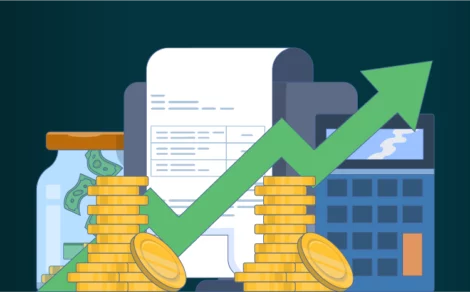It’s the mix of debt and equity a company uses to fund operations and growth.
Ever wondered how companies decide where to get their money from? Why do some borrow heavily, while others rely more on investor funding? The answer lies in something called capital structure.
It’s a term you’ll often hear tossed around in the world of finance, especially if you’re analyzing a company’s balance sheet or making an investment decision. But don’t worry, it’s not as intimidating as it sounds.
Let’s break it down in simple language.
Introduction to Capital Structure
Running a business takes money, actually lots of it. Whether it’s a small startup looking to expand or a giant corporation launching a new product line, they all need capital. But capital doesn’t just fall from the sky. Companies raise it in two major ways:
- By borrowing money (debt), or
- By selling ownership (equity).
The mix of these two is what we call a company’s capital structure. And finding the right mix? That’s the tricky part.
What is Capital Structure?
In simple terms, capital structure refers to the combination of debt and equity a company uses to finance its overall operations and growth. It’s how a company stacks its money—part borrowed, part owned.
This structure plays a big role in determining how risky or stable a company is. Too much debt, and the company may struggle during tough times. Too much equity, and the owners might be giving away too much control or diluting their shares.
The capital structure meaning goes beyond just numbers on a balance sheet. It reflects a company’s strategy, its attitude toward risk, and even its future vision.
For example:
- A company with more equity is usually more conservative and less financial burden, but slower growth.
- A company with more debt might be aiming for aggressive expansion but it’s riskier if things don’t go as planned.
In essence, it tells you a lot about how a business is run.
According to corporate finance experts, the capital structure definition is: “The specific mix of long-term debt, short-term debt, common equity, and preferred equity that a company uses to fund its operations and growth.”
Yes, that’s the textbook version. But in real life, it boils down to this:
How much money did the company borrow, and how much did it raise by giving out shares?
How Capital Structure Works?
Imagine your friend Riya wants to open a cafe. She needs ₹10 lakhs. She has two options:
- Take ₹5 lakhs as a loan from a bank (debt).
- Ask a friend to invest ₹5 lakhs in exchange for 50% ownership (equity).
She now has both debt and equity. This is her capital structure.
Over time, if her cafe does well, she can choose to pay off the debt or bring in more equity investors. But if business slows down, the loan repayment might become a burden. That’s where capital structure helps understand the making and breaking of a company.
Different Types of Capital Structure
There’s no one-size-fits-all structure. But companies typically follow these types:
| Type | Description |
|---|---|
| Equity-heavy | Mostly funded by shareholders. Safer but slower. |
| Debt-heavy | Relies more on loans. Riskier, but higher potential returns. |
| Balanced | A mix of debt and equity. Often considered ideal. |
| Leveraged | Uses a large portion of debt to boost growth (but risky). |
Every company chooses what suits its goals and risk tolerance.
Why is Capital Structure Important?
Here’s why businesses care so much about getting their capital structure right:
- Cost Efficiency: Debt is cheaper than equity (thanks to tax benefits), but risky.
- Flexibility: The right mix allows companies to adapt to changing market conditions.
- Control: Raising equity means sharing ownership. Some founders prefer keeping control.
- Financial Health: A healthy capital structure keeps the business stable, even during downturns.
For investors, analyzing a company’s capital structure gives clues about how it handles risk and grows revenue.
How to Define an Ideal Capital Structure?
The ideal capital structure varies from company to company. But here’s what most experts agree on:
- Low enough debt to avoid repayment stress.
- Enough equity to keep the business funded without giving away too much control.
- Flexibility to raise more capital in the future.
In other words, it’s all about balance.
Highly capital-intensive industries like infrastructure or telecom may naturally have higher debt. On the other hand, tech startups may rely more on equity in the early years.
There’s no magic formula but just a smart mix based on the business model.
Decode with Capital Structure Example
Let’s understand with an example to wrap our heads around this.
ABC Ltd. needs ₹100 crores for expansion. Here’s how they choose to raise it:
- ₹40 crores from issuing equity shares to investors.
- ₹60 crores from taking loans from banks.
So, ABC Ltd.’s capital structure is:
- Debt: 60%
- Equity: 40%
This tells us the company is using more borrowed money than owned funds. If they grow fast, they’ll benefit. But if the market crashes, their loan repayments could be a problem.
This is why understanding the capital structure example is essential and not just for finance students but for investors too.
Final Thoughts
So, to sum it up: capital structure isn’t just some accounting jargon. It’s a window into how a company funds its dreams, manages its risks, and navigates the ups and downs of the business world.
Whether you’re an investor sizing up your next stock pick, or a budding entrepreneur planning your funding strategy, understanding capital structure is a must.
Remember, how you raise money can define how far you go.
Just starting out with investing? Begin your stock market journey by opening a Demat Account with Torus Digital today.
Frequently Asked Questions
It’s simply how a business arranges its borrowed money and owned funds.
One that maintains a healthy balance between risk and return, supports business growth, and ensures liquidity.
Structural capital refers to the non-human assets of an organization that support employees’ productivity and overall business performance. It includes the systems, processes, databases, organizational culture, intellectual property (like patents and trademarks), and other infrastructure that remain within the company even when employees leave.
Related Reads
Understanding Types of Fixed Deposit
Fixed Deposits (FDs) are one of the most preferred investment options in India. Known...
By: torus
- 5 mins
- 06.Aug.2025
- 0(0)
- 0
Difference Between Fixed Deposit and Recurring Deposit
When planning your investments, choosing the right product that aligns with your financial goals...
By: torus
- 5 mins
- 06.Aug.2025
- 0(0)
- 84
Fixed Deposits vs Mutual Funds: A Complete Guide
When it comes to selecting investment options, two of the most popular choices among...
By: torus
- 5 mins
- 06.Aug.2025
- 0(0)
- 38
What is Overdraft Against Fixed Deposit?
When you need urgent funds but don’t want to break your fixed deposit (FD),...
By: torus
- 5 mins
- 06.Aug.2025
- 0(0)
- 52
What is a Fixed Deposit - FD Meaning, Full Form and Types
A fixed deposit (FD) is one of the most traditional and popular investment tools...
By: torus
- 7 mins
- 06.Aug.2025
- 0(0)
- 44
How to Grow Your Savings with Torus Digital Savings Account?
At a time when financial growth is key, saving smartly matters more than ever....
By: torus
- 8 mins
- 04.Aug.2025
- 0(0)
- 32
Disclaimer: The content provided in this blog is for informational purposes only and does not constitute financial advice or recommendations. The content may be subject to change and revision. Readers are encouraged to conduct their own research and consult with a qualified financial advisor before making any investment decisions. Torus Digital and its affiliates takes no guarantees whatsoever as to its completeness, correctness or accuracy since these details may be acquired from third party and we will not be responsible for any direct or indirect losses or liabilities incurred from actions taken based on the information provided herein. For more details, please visit www.torusdigital.com.
Tenneco Clean Air IPO Listing: Strong Market Debut with 27% Premium
Tenneco Clean Air India Ltd made a confident entrance into the public markets on...
By: torus
- 5 mins
- 19.Nov.2025
-
3.7(6)
-
135
Stock to Buy Today: November 19, 2025
The Indian stock market witnessed a mild decline on November 18, 2025, ending a...
By: torus
- 4 mins
- 19.Nov.2025
-
4.3(3)
-
135
Mirae Asset Infrastructure Fund NFO: A Sector-Focused Bet on India’s Growth
Mirae Asset Mutual Fund has launched a new equity scheme — Mirae Asset Infrastructure...
By: torus
- 4 mins
- 18.Nov.2025
-
4.3(6)
-
135
Emmvee Photovoltaic IPO: Shares Make Muted Market Debut, List Flat At ₹217
Emmvee Photovoltaic Power made a muted debut on 18 November 2025, listing flat at...
By: torus
- 3 mins
- 18.Nov.2025
-
3.7(6)
-
135








